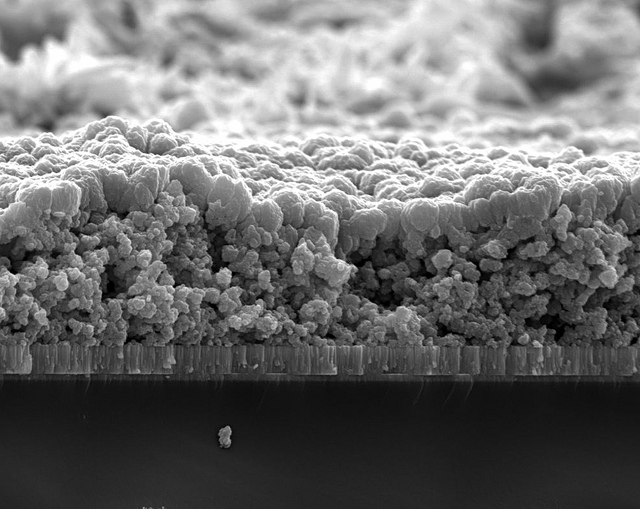Do you remember those tiny, tooth-sized blue figures in Listerine commercials that scrub and scrape the plaque off teeth? They come armed with imaginative ways of cleaning teeth that include high-powered mouthwash blasters and bending. A team of researchers led by Danielle Benoit at the University of Rochester and Hyun Koo at the University of Pennsylvania’s School of Dental Medicine has created nanoparticles that also fight dental plaque, without the flashy visual effects.
Treatments meant to fight plaque and tooth decay are often swept away by saliva before they can do their job. Plaque is a type of biofilm—a group of various microbes living on an extracellular matrix—that sticks firmly to teeth. When the bacteria on this matrix digest sugars in the mouth, they produce an acid byproduct that can cause tooth decay. The researchers’ nanoparticles are designed to attach directly to this matrix and the tooth using a clever structure: the outer shell is positively charged to attach to negatively charged sites on the plaque and the tooth, while the inside reacts to the acid released by the bacteria to dispense an antibacterial drug called farnesol.
Image source: C. J. Burton
The researchers tested their drug-delivery system in rats infected with a bacteria known to cause tooth decay, Streptococcus mutans. They simulated how people use mouthwash in the morning and evening by rinsing the rats’ mouths with a solution containing the nanoparticles twice a day for 30 seconds each time. The rats who received the nanoparticles had less severe and fewer cavities, while those who received just farnesol had no observable effect on the number of cavities and only a small effect on their severity. Furthermore, since the nanoparticles attach to all biofilms, they can also be used to fight biofilms that develop on other surfaces like orthopedic devices and catheters.
Since these nanoparticles would likely be swallowed after releasing farnesol at biofilm sites, they still need to be tested for any unwanted side-effects in humans. However, it would be cool to see future oral care products that come with plaque-fighting nanoparticles, albeit non-humanoid ones.
The research paper can be found here.
*Reprinted (adapted) with permission from: pH-Activated Nanoparticles for Controlled Topical Delivery of Farnesol To Disrupt Oral Biofilm Virulence. Benjamin Horev, Marlise I. Klein, Geelsu Hwang, Yong Li, Dongyeop Kim, Hyun Koo, and Danielle S. W. Benoit. Copyright 2015 American Chemical Society.
Feature Image Source: Nanoparticles by Oregon State University










